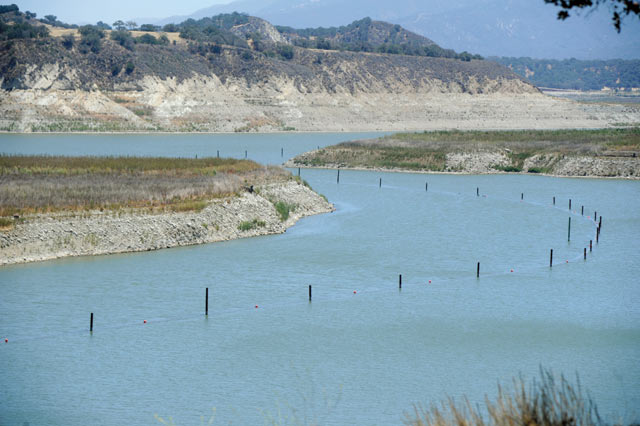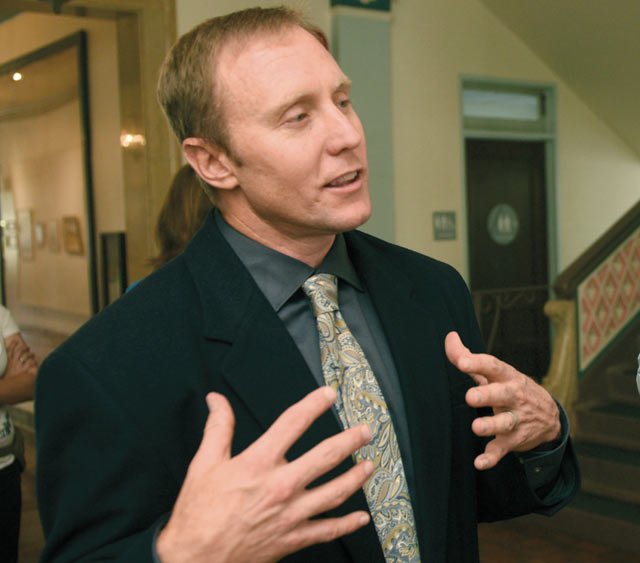Lake Cachuma 11 Percent Full or 89 Percent Empty?
Desal Plant ‘Opening’ Delayed by a Couple Month

For a $60 million industrial construction project, running a few months over schedule is not typically a matter of concern. But with Lake Cachuma — which supplies half the South Coast’s water supply — down to 11.5 percent capacity, now is not a happy time to discover technical difficulties will delay the starting date for the City of Santa Barbara’s refurbished desalination plant by a couple of months. For a host of reasons — contaminated soil and faulty, hard-to-replace electrical components needed to power the plant’s intake pipe — City Hall will have to spend nearly $5 million above and beyond the $55 million it budgeted last year. And the start-up date — originally scheduled for October 1 and then December 1 — has now been pushed back to January 23, 2017.
City water czar Joshua Haggmark insists Santa Barbara has adequate supplies to meet its water demands through next summer. But he also said city decision makers may need to consider new restrictions on outdoor water use. Automatic sprinkler heads — said to be 50 percent inefficient — might soon be on the regulatory chopping block. A moratorium on new construction, he said, might save water in the long term but wouldn’t address the city’s acute short-term needs. Haggmark said he inherited some major problems bequeathed by the old desal plant, built in the 1990s. City planning maps indicated the soil by the waterfront desal facility had been cleaned of contaminants during construction of the first plant, he said, but in fact, it was just the opposite. Before construction crews are through, 12,700 cubic yards of contaminated soil — 1,270 large dumptruck loads — will have been hauled away at a cost to City Hall of $4.2 million.

Since the 1990s, water-quality advocates have discovered widespread contamination of soils near the waterfront — lead being a significant culprit — which was used as a dumping ground for all the wreckage generated by the city’s earthquake of 1925. Another $2.25 million needs to be spent to replace vintage “transitional” conduits that help weave a three-mile stretch of high-powered electrical line along the length of the desal plant’s inflow pipe.
This power line goes inside the pipe at some points and then outside at others. The transition pieces are crucial for that inside-outside transition, but the parts are 25 years old, made of fragile fiberglass, and encased in concrete. When one was tested at low pressure, bolts snapped off, and the expensive widget “exploded,” much like a “sheered-off” fire hydrant. Each of the four “pieces” are unique and have to be custom built outside the United States. Only two have even been measured, which required that the concrete be carefully chipped away. Of the other two, one is in the ocean and the other located on the beach near the bicycle path. Because the grunion will soon be running — burrowing into the wet beach sands for mating purposes — it’s not clear exactly when such measurements can be taken.
In the meantime, Santa Barbara residents are using 36 percent less water than they did a year ago. But consumption typically increases in July and August — traditionally the hottest months of the year. For the time being, the City of Santa Barbara is pumping all eight of its wells, pedal to the metal. Thus far, there’s been no evidence of saltwater intrusion, but that’s only a matter of time.
Lake Cachuma is effectively dry, save for a few thousand acre-feet of water carried over from previous years. And every day, the pipes and pumps of the state water system deliver 42 acre-feet of water — bought from Kern County water agencies. Of that, the City of Santa Barbara takes about two-thirds and Goleta the rest. “Goddamn,” exclaimed Haggmark. “It’s got to rain at some point, right?”



